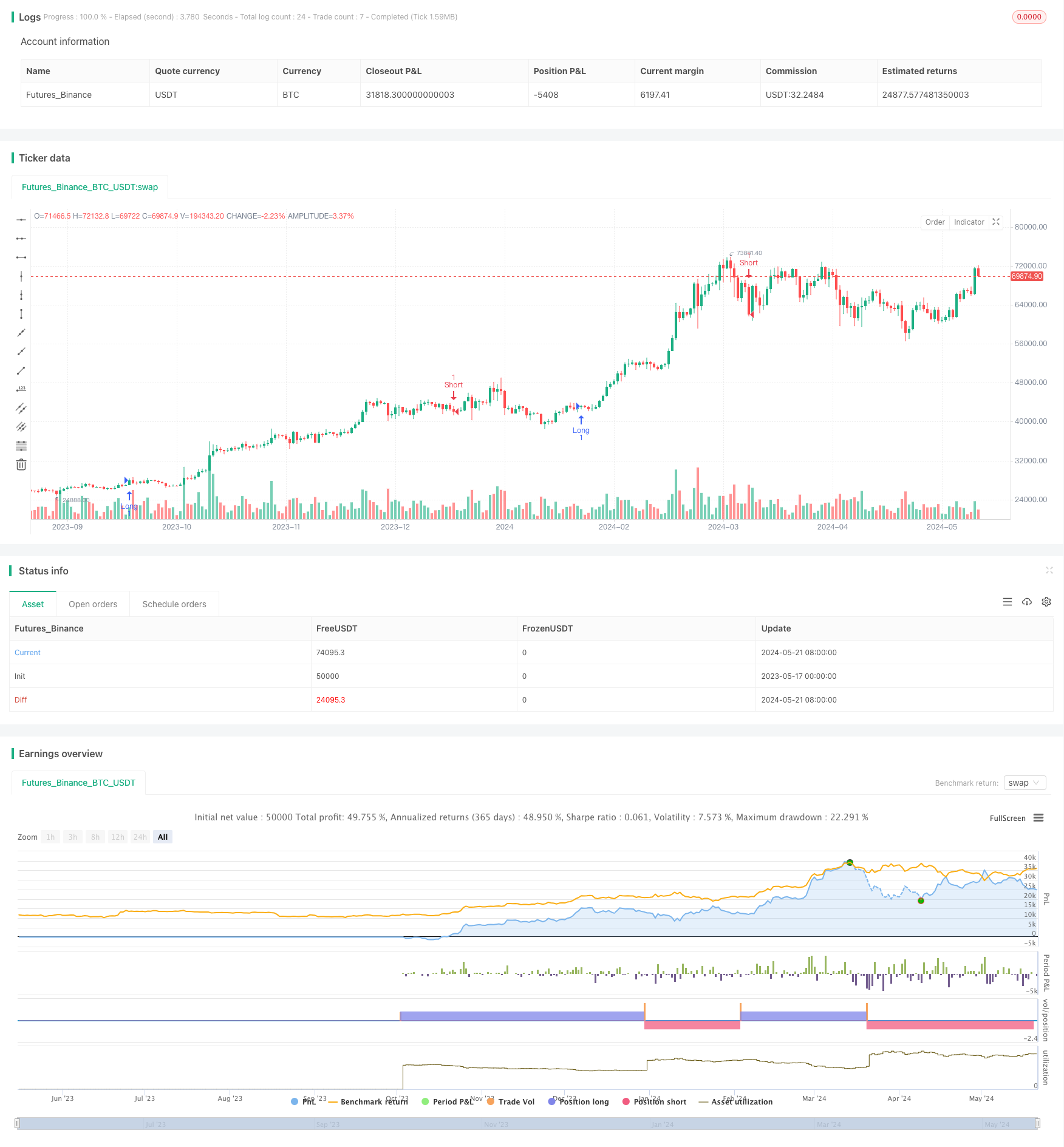
概述
SMC市场高低点突破策略是一个基于高级市场概念(SMC)原理的量化交易策略。该策略在高级别时间框架中识别重要的买卖压力区域(订单区块),并在当前时间框架中寻找最佳的突破点入场。这与SMC原理相一致,即这些区块通常作为支撑位或阻力位。策略同时考虑了趋势方向、诱导形态和风险回报比,以优化进场点位和盈亏比。
策略原理
- 在高级别时间框架(如1小时图)中识别上升趋势和下降趋势。上升趋势定义为收盘价高于前一周期收盘价,且低点高于前一周期低点。下降趋势则相反。
- 在高级别时间框架中寻找诱导形态。多头诱导形态为在上升趋势中,前一周期高点高于前两周期和前三周期高点。空头诱导形态则在下降趋势中,前一周期低点低于前两周期和前三周期低点。
- 在高级别时间框架中识别订单区块。在多头诱导形态后,将该周期的最高价和最低价定义为订单区块的上下边界。空头诱导形态则相反。
- 在当前时间框架(如15分钟图)中寻找最佳进场点。多头进场为当前收盘价突破订单区块下沿,且前一周期收盘价在区块内。空头进场则为收盘价跌破订单区块上沿。
- 设置止损和止盈。止损位置为订单区块的边界,止盈根据设定的风险回报比(如1:1.5)计算。
策略优势
- 基于SMC原理,在高级别时间框架中捕捉主要趋势和关键支撑阻力位,避免了在低级别时间框架中的市场噪音干扰。
- 诱导形态的识别有助于判断趋势强度和可持续性,为进场提供更多依据。
- 在当前时间框架中精确突破进场,减少无效信号和回撤风险。
- 灵活的风险回报比设置,可根据个人风险偏好进行调整。
策略风险
- 在震荡市或趋势反转初期,该策略可能面临一定回撤风险。
- 极端行情下(如급涨急跌),订单区块可能失效,导致止损位过于宽松。
- 仅考虑价格行为,忽略了成交量等其他重要指标,判断可能存在偏差。
策略优化方向
- 引入更多高级别时间框架(如日线、周线)作为过滤,确保捕捉长期趋势。
- 在识别趋势和诱导形态时,可结合均线系统、动量指标等,提高判断准确性。
- 对订单区块边界进行动态优化,如考虑ATR(平均真实波幅)或通道宽度,以应对不同市场状态。
- 进场后可设置移动止损,如跟踪ATR或SAR(抛物线指标),以降低持仓风险。
- 考虑市场情绪指标(如 VIX)或宏观经济数据,以识别可能的趋势反转或黑天鹅事件。
总结
SMC市场高低点突破策略是一个基于SMC原理的量化交易策略,通过在高级别时间框架中识别关键压力区域,并在当前时间框架中寻找最佳突破点入场。该策略综合考虑了趋势方向、诱导形态和风险回报比,以优化进场点位和盈亏比。策略优势在于基于高级别时间框架过滤噪音,精确捕捉趋势,并具有灵活的风险管理功能。但在震荡市或趋势反转初期,策略可能面临一定回撤风险。未来可通过引入更多时间框架、优化订单区块边界、动态止损以及考虑市场情绪等方面进行优化,以提高策略稳健性和适应性。
策略源码
//@version=5
strategy("SMC Indian Market Strategy", overlay=true)
// Input Parameters
htf = input.timeframe("60", title="Higher Timeframe") // For Inducement & Order Block
riskRewardRatio = input.float(1.5, title="Risk:Reward Ratio", minval=0.1)
// Higher Timeframe Data
[htfOpen, htfHigh, htfLow, htfClose] = request.security(syminfo.tickerid, htf, [open, high, low, close])
// Trend Identification (HTF)
bool htfUptrend = htfClose > htfClose[1] and htfLow > htfLow[1] // Price action
bool htfDowntrend = htfClose < htfClose[1] and htfHigh < htfHigh[1]
// Inducement Identification (HTF)
bool htfInducementHigh = htfUptrend and high[1] > high[2] and high[1] > high[3]
bool htfInducementLow = htfDowntrend and low[1] < low[2] and low[1] < low[3]
float inducementLevel = htfInducementHigh ? high[1] : htfInducementLow ? low[1] : na
// Order Block Identification (HTF)
var float htfOBHigh = na // Highest high within the order block
var float htfOBLow = na // Lowest low within the order block
if htfInducementHigh
htfOBHigh := htfHigh
htfOBLow := htfLow
else if htfInducementLow
htfOBHigh := htfHigh
htfOBLow := htfLow
// Optimal Entry (Current Timeframe)
bool longEntry = htfUptrend and close > htfOBLow and close[1] < htfOBLow // Break of OB low
bool shortEntry = htfDowntrend and close < htfOBHigh and close[1] > htfOBHigh // Break of OB high
// Stop Loss and Take Profit
float longSL = htfOBLow
float longTP = close + (close - longSL) * riskRewardRatio
float shortSL = htfOBHigh
float shortTP = close - (shortSL - close) * riskRewardRatio
// Strategy Execution
if longEntry
strategy.entry("Long", strategy.long, stop=longSL, limit=longTP)
else if shortEntry
strategy.entry("Short", strategy.short, stop=shortSL, limit=shortTP)
相关推荐